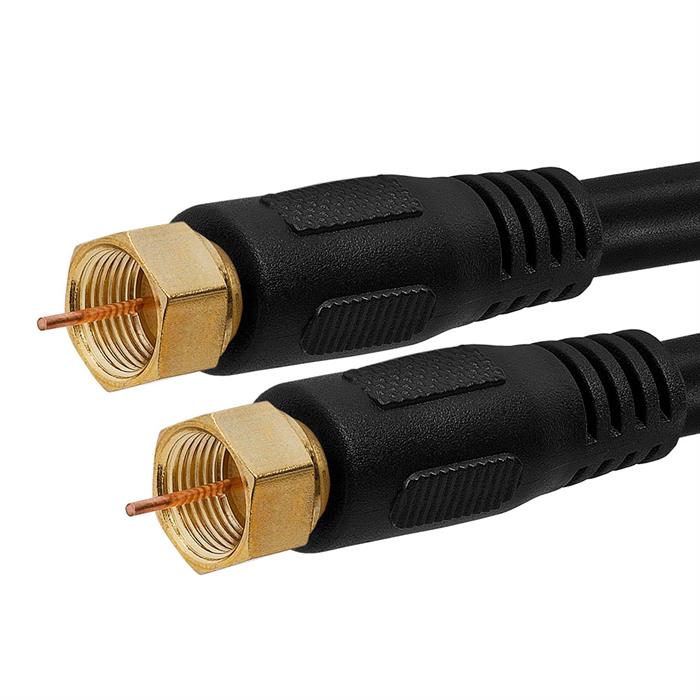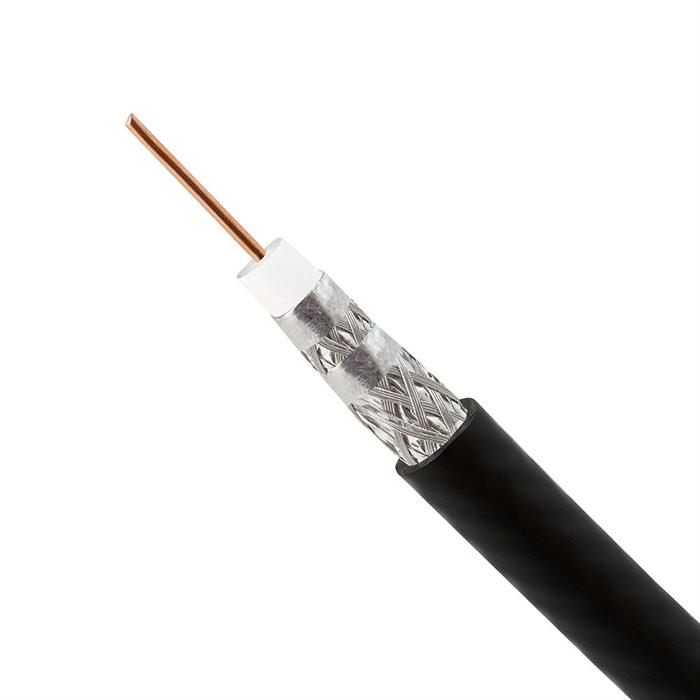F-Type Video Cables Fully Illustrated
F-Type video cables are inexpensive, sturdy cables that provide clear transmission of terrestrial of satellite video signals to TVs. These are basically coaxial cables that have two male connectors at either end to plug into the TV and the receiving or transmitting device.
The F-Type video cables are low cost because the central core is a solid copper wire. This is typically covered with an insulating material such as Teflon, polyethylene, air, or some other insulating gas, and finally covered by a braided shield that protects the core from interference.
The Dimensions Matter
The transmission capacity of the F-Type video cables depends on the dimensions of the coaxial cables. These cables can transmit a huge spectrum of radio frequency starting from a few MHz to several GHz. Initially, the coaxial cables were used to transmit radio signals. However, when manufacturers started producing TVs for use in homes, they began looking for a low cost cable and decided to use the F-Type video cables.
No Water Allowed to Enter
These cables are found connecting TV antennas and satellite TV dishes to TVs. As this means that the cables are also exposed to the outdoor weather conditions, care is taken to make sure water cannot enter the coaxial cable from the connectors.
No Distortion
In the F-type video cables the signals are carried by the center conductor when electrical voltage is applied. To ensure that the complete charge is delivered to the TV or other display unit, the insulation material is used. This insulation also ensures that the signal is not distorted as it prevents any other electrical charge to reach the center conductor. The final cover of braided shield further prevents the distortion of signals and also acts as a grounding element for the cable.
Typically, F-type video cables have a resistance of 75 ohms. This ensures the smooth and effective transmission of the signals.
Most F-type video cables have two male plugs to be plugged into the TV and other devices. This makes installation slightly difficult but not impossible.
Electrical Impulses
When buying an F-Type video cable you need to check that the center conduction material is copper, that the impedance is 75 ohms with a narrow range, and that the dimensions of the core are large enough to meet your needs. Moreover, you need to make sure that the cable is flexible, enabling you to use it with ease when bringing it from the outdoor antenna to the indoor TV. Additionally, you need to check the quality of the male connectors and make sure that they will plug in easily. The connectors should also be attached properly to the cable ensuring that water cannot enter the center conducting material. This is vital for safety since the center will be transmitting electrical impulses as signals.
While F-type video cables have been around for long, from the 1970’s, they are still used for transmitting video signals because they are relatively inexpensive. Their ability to transmit video signals without distortion even when exposed to the elements ensures that are used for terrestrial transmission for video signals. The fact that they are water proof is of vital importance as well.
As F-type video cables are flexible and sturdy they can be used to connect antennas and TVs that are even 1,000 feet apart.
A Fantastic Transmission
While the primary use of F-type video cables has been to connect external TV antenna to the indoor TV, they can also be used in security applications. If you have CCTV cameras to secure the perimeter of your property and want to connect them to an indoor TV screen for ease of monitoring and recording, you can easily use these cables for the purpose. They are appropriate of this type of use and inexpensive, while proving a clear transmission of the videos.
Length & Price
Before purchasing F-type video cables you need to determine the dimensions of the cable you will need. If you expect a lot of signals or need to install splitters, then you should opt for a larger dimension cable. Besides, you need to decide on the length of the cable you will require. Since longer cables are more expensive, you need to have a clear idea of the use of the cable and the location of the components it is meant to connect. Once you have measured the length of cable required, you can place your order.
While most F-type video cables have a center conducting material of copper some are coated with silver. This is likely to speed up the transmission but this is unnecessary in most home applications. Instead, you can decide to use a full copper center that will be more affordable.
With improvements in technology, one now has access to a wide variety of cables for video transmission. However, the F-type video cables have stood the test of time for certain applications. These include connecting the external antenna to the TV or connecting CCTV cameras to a TV for monitoring. In both these cases, the focus has to be on ensuring that the picture is transmitted without distortion even as the cable is able to withstand wet weather and humid conditions.
Cost Considerations
By using F-type video cables that use coaxial cables you will be able to obtain affordable video transmission from TV antennas, satellite dish antennas, and other sources. You can also use these cables to connect various video equipment at home at a lower cost that newer cables.
Combating Distortion
The solid core of the F-Type video cables ensures that it can be produced inexpensively while it still performs as a marvelous transmitter of video signals. By covering the solid core with magnificent insulating material such as Teflon, it is possible to reduce distortion during the transmission to negligible levels. As such you need to check the insulating material used before you purchase this cable.
The Main Purpose
Similarly, some cables have two layers of braided shields to reduce interference while others have a single layer of braided shield and a final layer of aluminum foil covering. Both are designed to reduce interference and ensure the better transmission of signals.





